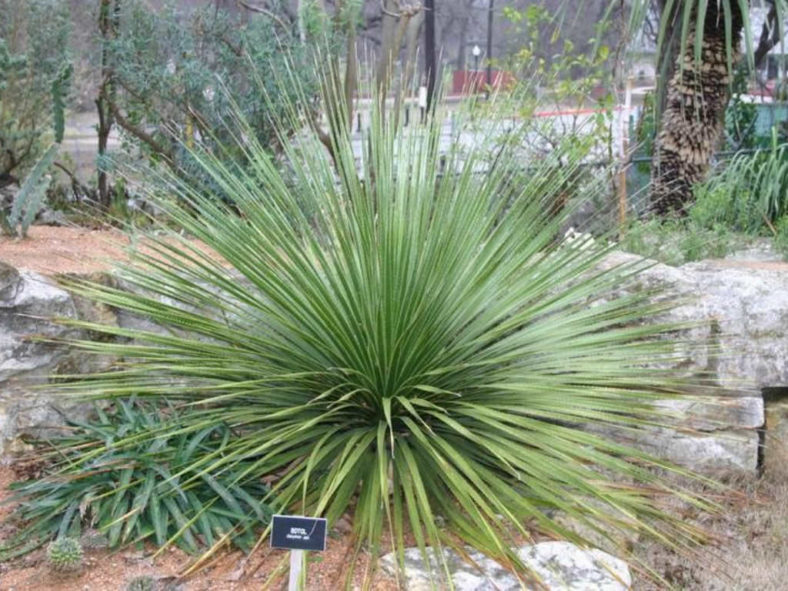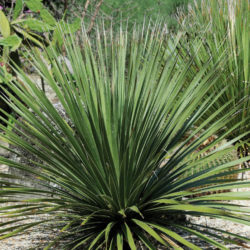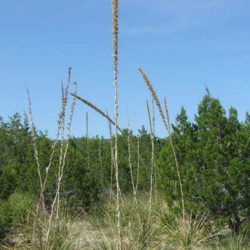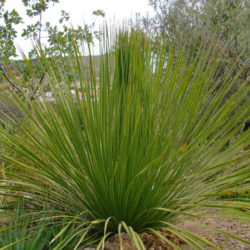Scientific Name
Dasylirion texanum Scheele
Common Name(s)
Texas Sotol, Sotol
Synonym(s)
Dasylirion texanum var. aberrans
Scientific Classification
Family: Asparagaceae
Subfamily: Nolinoideae
Genus: Dasylirion
Description
Dasylirion texanum is a highly ornamental plant with narrow, usually shiny, bright green leaves spreading from a central trunk that is sometimes partially buried underground. The leaves are up to 4.3 feet (1.3 cm) long and 0.8 inches (2 cm) wide, with small sharp teeth along the margins.
The spectacular erect, up to 13.1 feet (4 m) tall flower stalks appear in spring and summer, bearing whitish or greenish flowers.
Origin
The native range of Dasylirion texanum is from central and southwestern Texas in the United States to the Coahuila state of northeastern Mexico, including the Chihuahuan Desert. It grows in arid, rocky limestone habitats.

Hardiness
USDA hardiness zone 7a to 11b: from 0 °F (−17.8 °C) to 50 °F (+10 °C).
How to Grow and Care
Dasylirions are slow-growing, carefree, durable, drought-tolerant plants. However, they grow faster if watered well (don't water the crown, though they rot easily). In the garden, they should be placed in a sunny, well-drained area with additional summer water in dry climates.
These make great specimen plants for xeriscape gardens and blend well in either tropical or arid gardens. Small plants are relatively inexpensive, but larger ones are a fortune. These make excellent potted specimens, and their symmetrical form provides a striking focal point.
They thrive best in full sun but can be grown with some shade and humidity. Plant in very fast-draining soil and provide little or no water in winter. Treat like a succulent. Best where winter temperatures stay above 50°F (10°C) but can take some periods of frost. Plants in containers can be moved inside during longer cold spells.
See more at How to Grow and Care for Dasylirion.
Links
- Back to genus Dasylirion
- Succupedia: Browse succulents by Scientific Name, Common Name, Genus, Family, USDA Hardiness Zone, Origin, or cacti by Genus
Photo Gallery
Click on a photo to see a larger version.


